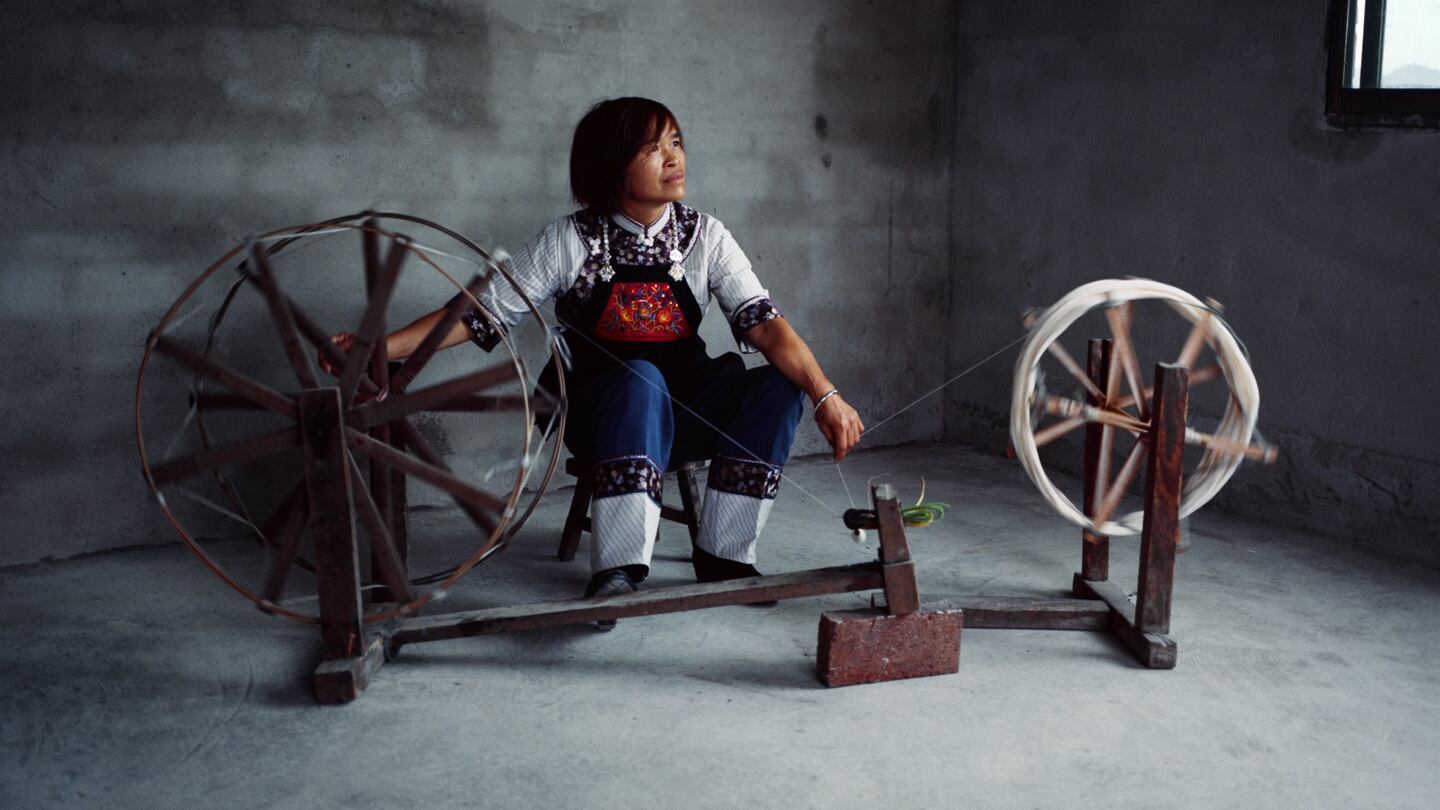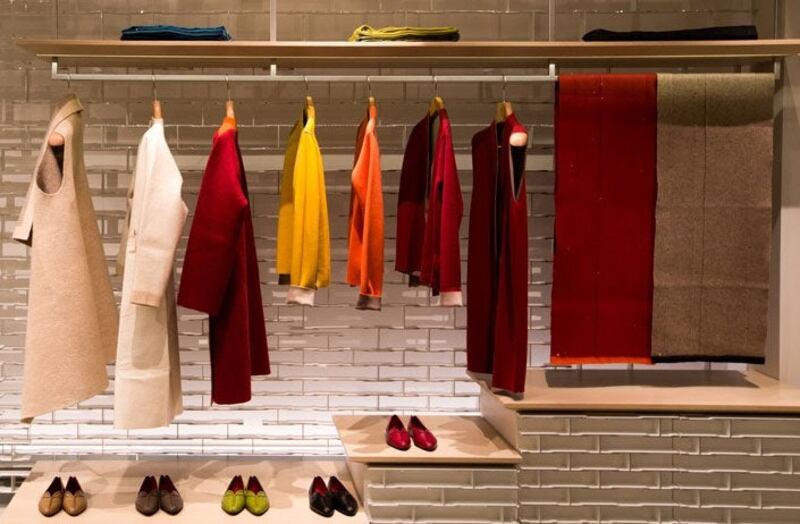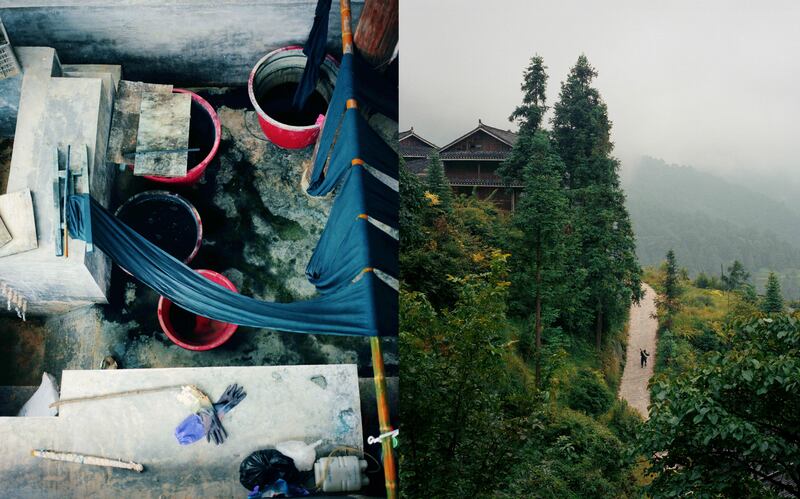
The Business of Fashion
Agenda-setting intelligence, analysis and advice for the global fashion community.

Agenda-setting intelligence, analysis and advice for the global fashion community.

LONDON, United Kingdom — In 2006, Angel Chang wanted to make the clothes of the future.
The Asian-American designer launched an award-winning brand focused on innovative materials, from self-heated linings to fabrics that light up and change colour. But just two years in, she was disillusioned with technology’s role in driving textile innovation.
Chang then took a U-turn and moved from New York City to a remote mountain village in China’s Guizhou province. The goal: to learn from ethnic-minority elders employing ancient techniques to grow, weave, spin, dye and hand-sew their own clothes. Slow fashion at its slowest.
What started as an expedition sowed the seeds for Chang’s namesake luxury clothing brand, which is launching today. On its site, the label’s naturally dyed native seed cotton fabrics take the form of relaxed button-down shirts and palazzo pants in shades of blue, beige and yellow. The colours are imparted by indigo, soil and gardenia flower pods. Prices range from $425 to $1,220.
ADVERTISEMENT
It’s a fraught time to launch any business, let alone a Chinese-made, ethical luxury fashion brand in the US. Nonetheless, Chang reckons that the time is ripe to bring ‘made in China’ luxury to the world, and she isn’t alone. But figuring out supply chains, logistics, and marketing a Chinese-made brand in a Eurocentric luxury ecosystem aren’t for those seeking quick returns.
From Luxury Consumer to Producer
For many, luxury invokes images of European ateliers and ‘petites mains,’ traced back to Louis XIV’s reign and the establishment of France as the industry’s global centre in the 17th century.
But China has its own luxury roots dating back some 5,000 years to the invention of sericulture (silk making). “Luxury goods came from China historically and history has just forgotten,” said Chang, alluding to Silk Road routes dating back to the 2nd century BCE. Today, the mainland is widely known for being the world’s largest garment manufacturer — and for a while, one of the cheapest places to produce fashion — but is rarely associated with heftier price tags.
This began to change when, driven by rising nationalism as well as global demand, contemporary Chinese designers from Ximon Lee to Ming Ma to Shushu/Tong became favourites at home as well as among buyers in the West. But a Chinese-made luxury brand will be a harder proposition to sell, said Renee Hartmann, co-founder of China Luxury Advisors. “With luxury, it does take some time to support that really high price point at a large scale.”
Luxury goods came from China historically and history has just forgotten.
Even so, China's traditional craft has been on fashion's radar for some time. Brands from Marni to Uniqlo have worked with its ethnic minority artisans, while up-and-comers like Angel Chen have incorporated local minority handicrafts into their collections.
Now, in the wake of Covid-19 — which went some way to intensify patriotic spending in the mainland — the Chinese consumer will have a bigger say than ever in the luxury sector. According to Bain, they will make up half of global luxury spending by 2025.
While the economic discourse on China often revolves around the country's role as an engine of consumption, a successful luxury export market could help give its cultural heritage the spotlight it deserves. “It’s time for the world to turn its eyes to what is happening in the fashion industry in China — not simply from the aspect of selling to [it], but understanding the culture on a deeper level,” said Bohan Qiu, founder of Shanghai-based PR agency Boh Project.
ADVERTISEMENT
Strength in Numbers?
Though notable attempts have yet to pay off, a standout Chinese luxury label that masters the delicate balance of prestige and trendiness could also be a major acquisition target for European groups.
"The Chinese influence is coming to the [fore]. I believe that there is a real opportunity and space for a luxury brand with ties to Chinese culture, and the crisis has accelerated it," said Jiang Qiong Er, artistic director and chief executive of Hermès joint venture, Shang Xia — 90 percent of the brand's products are made in China and Hermès holds a 90 percent stake, having reportedly spent over $13.3 million a year on the brand until 2013, after which Jiang said the figure has varied.
Despite being backed by the household name, Shang Xia hasn’t had resounding success and has yet to break even, despite “getting very close,” said Jiang. “A luxury brand needs to invest time and love beyond finance.”

Inside Shang Xia's Beijing store | Source: Shang Xia
Other stalwarts have made similar moves. In 2012, Kering bought Qeelin, a Chinese jewellery brand founded by Jiang's husband Guillaume Brochard. Richemont owned but sold Shanghai Tang in 2017, with reports citing a failure to transform the brand into a western-style luxury label for millennials.
So far, none of these brands have been a huge hit locally, due in part to a lack of enthusiasm for their traditional design aesthetics from younger, growth-driving Chinese shoppers. (Jiang noted that Shang Xia is preparing to launch its first sneaker style in a bid to appeal to younger streetwear fans.)
Hartmann added that investing in an independent label could relieve a group’s top brand from the urge to cater designs to Chinese clientele (a strategy that often falls flat). It can also infuse the wider business with local expertise and provide an opportunity to trial new things — be it artisanal techniques or marketing trends that, for a core portfolio label, risk seeming off-brand. “That’s something large luxury houses are going to need, too.”
ADVERTISEMENT
Delayed Gratification
China has a diverse and highly-skilled pool of craftspeople but the sector is fragmented and lacks the well-worn networks available in Europe linking workshops to suppliers and distributors. “In China you don’t have the ecosystem you have in Italy and France... and that’s the foundation of the luxury business,” said Jiang.
Creating that infrastructure from scratch is a long-term investment and one that requires top-down support and talent. It’s challenging to go about it alone. Chang’s brand may be launching this week, but the designer showcased her first pilot collection to Parisian buyers in 2012. “We didn't know how to produce multiple pieces as everything was artisanally hand-made,” she told BoF over a Zoom call.

fabric dyeing and village surroundings in Guizhou | Source: Boe Marion for Angel Chang
The following years were spent conducting training programmes in Guizhou with a grant from the Smithsonian to standardise the production process, pricing out artisan work with the help of a local non-profit and working out supply chain logistics. At the same time, Chang designed and did freelance work for brands in Paris and Milan to raise money and seek out sponsorships for the brand. But the biggest challenge was communication. “In the beginning I couldn’t speak Chinese so I had a translator. It took years before I could go there by myself,” she said.
Jiang can relate. Shang Xia began seeking out artisans in 2008 and it now works with 30 workshops in regions across the country, from embroidery masters in Suzhou to cashmere farmers in Inner Mongolia. "We had the craftsmanship but not the management, the process… we had to seek out [the artisans], bring the procedure to them and take them with us hand in hand. It was a long process."
A decade later, the work is only now beginning to pay off, in the form of 50 percent revenue growth last year from the same period in 2018.
Designers who aren’t backed by a patient investor should prepare to find other ways to address the resource-intensive nature of luxury craft businesses. “You don’t only need money. You need time,” said Jiang. You also need to be a certain kind of entrepreneur. “Stay very small and create beautiful products, but if you want volume and excellence, being [independent] is very difficult.”
Marketing ‘Made in China,’ to China
Much of the world still denigrates the ‘made in China’ label, but rounds of market testing in Europe, the US and China convinced Chang that there is healthy demand for her luxury pieces. “I wouldn’t be launching now if people didn’t ask me to make the clothing.”
Different aspects of her brand story scratched different itches: the American consumer loved the philanthropy of the training programmes and fair wages paid to artisans, Europeans were fans of the quality and craft and Chinese were supportive of her incorporating their culture’s craft. However, many Chinese weren’t willing to pay the big prices just yet.
Going west first is a strategy, but it's not the only strategy.
As a solution, Chang will be focusing on the US and European markets first, before taking the brand ‘home’ — a common and often successful play for non-western brands. “When I was in China, the advice was to first get validation from the western market... then it’d be a signal to the Chinese that this brand has value to it.”
But there are alternatives, said Hartmann. Even if a brand hasn’t made a splash in the West, it could find success in the mainland, especially as nationalism rises and e-commerce helps designers avoid spending on brick-and-mortar. “People want to find these Chinese brands they love,” she said. “Going west first is a strategy but it’s not the only strategy.”
Ultimately, brands need to raise enough capital to invest in making the most of whichever market (or markets) they choose. Like the journey of setting up a supply chain, brand- and story-building will require years of investment.
“Luxury isn’t built in a day,” said Qiu. “European brands had a much earlier start in the game, so they’re still in the lead.”
Related Articles:
[ Why 5,000-Year-Old Fashion Is Making a ComebackOpens in new window ]
[ Luxury Brands Have a ‘Respect Deficit’ with Indian ArtisansOpens in new window ]
With consumers tightening their belts in China, the battle between global fast fashion brands and local high street giants has intensified.
Investors are bracing for a steep slowdown in luxury sales when luxury companies report their first quarter results, reflecting lacklustre Chinese demand.
The French beauty giant’s two latest deals are part of a wider M&A push by global players to capture a larger slice of the China market, targeting buzzy high-end brands that offer products with distinctive Chinese elements.
Post-Covid spend by US tourists in Europe has surged past 2019 levels. Chinese travellers, by contrast, have largely favoured domestic and regional destinations like Hong Kong, Singapore and Japan.